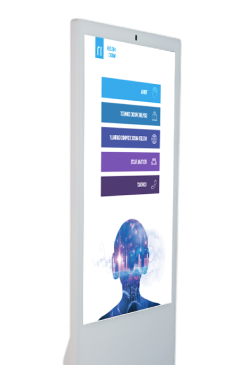

Event Solutions

Our Work

Super Tuesday Results: How Digital Information Kiosk Changed an Election
The results from super Tuesday are going to be a pivotal moment for our country. As of now, Covid-19 hasn’t gone anywhere and the pandemic’s human and economic tolls are still at stake. The pandemic also fast-tracked a shift that was already in progress: It made digital information kiosk an even greater factor in the future of our freedom. In 2016, we saw in real-time how powerful digital technology and information kiosk are for politicians and their supporters. Four years later, an information kiosk is being used to scan body temperatures, handle self-check-ins, and provide contactless information in an interactive way. But this is an overwhelming task if we all aren’t on the same page. Many companies are still lagging behind in understanding temperature screening solutions, and the misinformation on COVID keeps spreading making it more difficult to distinguish the real from the “fake news”. On top of all that, the pandemic has also created a host of unforeseen challenges as in-person has shifted almost entirely online and more Americans than ever before are looking for more contactless ways to interact with people and brands.
How safe and secure are voting polls based on digital information kiosks?
Cybersecurity in elections has and will continue to receive some serious consideration from the public, governments, and the media. Although technological improvements to the administration of elections can be significant, these gains must be balanced with the potential for new exposures and difficulties. When abandoning technologies is infeasible, good preparation can help mitigate similar cybersecurity risks. What we’ve noticed when we researched polling places with interactive digital signage kiosk: Self Service Kiosk A self-service kiosk is a line-busting solution that puts voters in control of the process. Self-service digital information kiosk are mobile interactive computer terminals. That gives the public access to real-time information, such as fact checks, statistical stats, body temperature, interactive software, and more. Here are a few other reasons why self-service digital information kiosk have changed the way we vote;
- Shorter Wait Times
- Enhanced Customization
- Improved Accuracy
End-to-end verifiable software This type of software relies on cryptography to encode and protect votes while allowing voters to see their vote was appropriately recorded, that the vote was properly tabulated, and that the final vote count matches the cast votes. End-to-end verifiable software can be integrated into existing election systems to enhance the security of the voting infrastructure. The chaos from this election might not be over for a while but one thing is already for certain. How we look at technology and elections has forever changed.